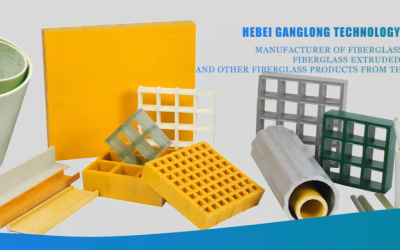Introduction
Hunting knives are more than just tools for outdoor enthusiasts; they’re companions that aid in various tasks. However, to ensure their longevity and optimal performance, regular care and maintenance are essential. Understanding the importance of maintaining hunting knives is crucial for any outdoor enthusiast. Not only does proper maintenance ensure their longevity, but it also enhances safety during use.
Welcome to our guide on caring for your best hunting knives! At hands, we understand the importance of maintaining your trusty blade for peak performance. In this comprehensive article, we’ll delve into essential maintenance tips and tricks to ensure you remain in pristine condition. We’ve got you covered from cleaning and sharpening to proper storage and safety measures.
Understanding Your Hunting Knife
A hunting knife is an essential tool for outdoor enthusiasts, designed for tasks like skinning games and cutting rope. Understanding your hunting knife involves knowing the different types, such as fixed blade and folding blade, each with unique advantages. The blade material, whether stainless steel, carbon steel, or titanium, impacts sharpness, durability, and maintenance. Handle materials, including wood, synthetic, or metal, affect grip and comfort. Familiarizing yourself with these aspects ensures you choose the right knife for your needs and maintain it properly for optimal performance and longevity in the great outdoors.
Cleaning Your Hunting Knives

Proper cleaning of your hunting knife is essential to maintain their performance and longevity. After each use, disassemble folding knives if possible and clean all parts with warm water and mild soap. Gently scrub the blade with a soft brush or cloth to remove blood, dirt, and debris. Thoroughly rinse and ensure complete drying to ward off rust formation. Periodically, perform a deep cleaning using specialized products to ensure thorough maintenance. Steer clear of abrasive chemicals that could potentially harm the blade or handle. Regular cleaning not only prevents rust and buildup but also ensures your knife is always ready for your next outdoor adventure, maintaining its sharpness and reliability.
Sharpening Your Hunting Knives
Keeping your hunting knives sharp is crucial for optimal performance in the field. Knowing when to sharpen is key; signs like dullness or difficulty cutting indicate it’s time. Choose the right sharpening tool stones, rods, or electric sharpeners, and maintain the correct angle for the blade. Apply consistent pressure and strokes to achieve a sharp edge evenly. Test sharpness periodically during the process. Avoid common mistakes like using the wrong angle or applying uneven pressure. By sharpening your regularly and correctly, you ensure they’re always ready for the tasks, enhancing safety and efficiency during outdoor adventures.
Storing Your Hunting Knives
Proper storage of your top hunting knives is essential to maintain their integrity and performance over time. Whether you use sheaths, knife blocks, or cases, ensure the blade is protected from environmental factors like moisture and dust. Leather and synthetic sheaths offer excellent protection during transport, while knife blocks and cases keep blades safe when not in use. Controlling humidity levels in the storage area prevents rust and corrosion, preserving your knives for years to come. Regularly inspect your storage options for signs of wear or damage, and replace them as needed. By storing them properly, you can ensure they’re always ready for your next outdoor adventure.
Preventing Rust and Corrosion
Rust and corrosion can quickly degrade the quality of your leading hunting knives, impacting their performance and longevity. Applying protective coatings to the blades, such as Teflon or ceramic, provides an additional barrier against moisture and oxidation. Regularly lubricating the blade and handle with high-quality oil creates a protective layer that prevents rust formation. Keep your knives dry at all times, wiping them down after use and storing them in a cool, dry place. Utilize desiccants or moisture-absorbing packets in storage containers to control humidity levels. By implementing these preventive measures, you can effectively safeguard your against rust and corrosion, ensuring they remain reliable tools for your outdoor pursuits.
Handle Care and Maintenance
Proper care and maintenance of your hunting knife’s handle are essential for ensuring its longevity and performance. Different handle materials, such as wood, synthetic, or metal, require specific care methods. For wooden handles, regularly oiling them helps prevent drying and cracking, while synthetic handles can be cleaned with mild soap and water. Metal handles benefit from periodic polishing to maintain their appearance and prevent corrosion. Additionally, regularly inspecting handles for wear and tear ensures early detection of any issues affecting functionality. By adopting these handle care practices, you can prolong the lifespan of your hunting knife and ensure it remains a reliable tool for your outdoor adventures.
Safety Tips for Knife Maintenance
Safety should always be a priority when it comes to maintaining your hunting knives. Wear protective gloves and safety glasses to prevent injuries while handling sharp blades and tools. When cleaning or sharpening your knife, always maintain a firm grip and keep your fingers away from the blade’s edge. Use caution when using sharpening tools to avoid accidents. Ensure a first aid kit is readily available for any potential cuts or injuries that may occur. Properly dispose of used blades and sharpening debris to prevent accidental cuts. By following these safety tips, you can ensure a safe and injury-free knife maintenance experience while keeping your good hunting knives in top condition for your outdoor adventures.
Conclusion
Regular care and maintenance are essential for ensuring the longevity and optimal performance of the best hunting knives. By following the tips and tricks outlined in this guide, outdoor enthusiasts can enjoy their adventures with confidence, knowing their knives are in top condition.
Encourage readers to share their own maintenance tips and experiences in the comments section, fostering a community of knowledge-sharing and camaraderie among outdoor enthusiasts.







